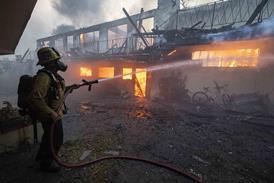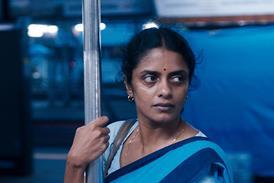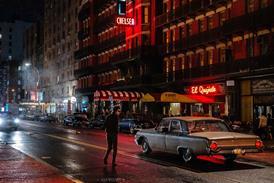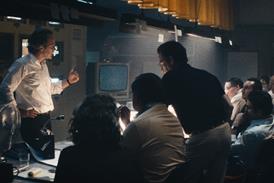Shooting in India is becoming much easier thanks to a group of savvy service companies helping foreign productions navigate the country’s notorious red tape. Meenakshi Shedde reports
India has long been a mecca for international productions looking for great locations, with its hypnotic cocktail of the exotic and the spiritual. It offers spectacular locations ranging from the snowy Himalayas to the lush backwaters of Kerala and the fabulous palaces of Rajasthan. From a producer’s viewpoint, the country also offers low production costs and world-class cast and crew with fluent English.
There has also been a big increase in interest in India since Danny Boyle’s Slumdog Millionaire scooped eight Oscars in 2009. Productions to shoot recently in the country include Ang Lee’s Life Of Pi, Brad Bird’s Mission: Impossible — Ghost Protocol, Roland Joffé’s Singularity, Michael Winterbottom’s Trishna, John Madden’s The Best Exotic Marigold Hotel, Peter Weir’s The Way Back and Christopher Nolan’s The Dark Knight Rises.
“India is a very beautiful, dynamic country. That combined with its incredible history, friendly people and stunning locations — there are so many reasons why anyone would want to film there,” says Melissa Parmenter, producer at the UK’s Revolution Films, which produced Trishna. Starring Freida Pinto and Riz Ahmed, the India-set adaptation of Thomas Hardy’s Tess Of The D’Urbervilles filmed in Jaipur.
India is also one of the biggest film markets worldwide, with annual cinema admissions of around 3 billion, according to a FICCI-KPMG report. “India is the next big market. There is an abundance of talent and expertise, and the history is wonderful. The world is becoming more interested in India and its culture, so more films will be made there,” says Paul Breuls, CEO of UK and Belgium-based Corsan, which co-produced Singularity, an epic love story set across two time periods and continents, starring Josh Hartnett and India’s Bipasha Basu.
Slumdog’s success also highlighted some of the benefits of shooting in the country. “After we did Slumdog Millionaire, the West realised you can pull off shooting an entire full-length feature in India, with an entire Indian crew of international calibre,” says Tabrez Noorani of production services company India Take One. In addition to Slumdog Millionaire, it has worked on Life Of Pi and Mission: Impossible — Ghost Protocol.
India can also work out much cheaper than shooting in the US or Europe. Noorani adds: “On one of the films we were shooting, we decided to shoot a wedding sequence that was supposed to be shot in the US, in India instead. It meant one shooting day, and the original cost of $200,000 came down to $80,000 in India. So if you’re clever, you can save a lot of money.”
‘After Slumdog Millionaire, the West realised you can shoot a full-length feature in India, with an Indian crew of international calibre’
Tabrez Noorani, India Take One
Substantial savings can be made by using Indian cast and crew, sound stages and post-production facilities. “An electrician would cost $1,900 (€1,400) per week in Italy but only $190 (€140) in India — so there is definitely a huge cost saving, especially for projects with large location requirements, set builds and extras,” says Dileep Singh Rathore of production services outfit On The Road Productions, which worked on The Way Back and The Dark Knight Rises.
India’s studios and post-production facilities are also cost-effective and world class. “Everything for SlumdogMillionaire was done in India, except for the final mix,” explains Noorani. “Kodak Labs in Mumbai is amazing and we usually process all our film there. The Reliance MediaWorks transfer and post-production facility [in Mumbai] is also state of the art and we do all our HD work there. We did all our post-sound at Resul Pookutty’s facility and Yash Raj Studios, both in Mumbai. We also shot on stages at ND Studios, near Mumbai.”
However, line producers also point out that it is possible to spend more than expected in India and you can push up costs and paperwork by bringing in crew and equipment from other countries. As India is developing fast both in terms of technology and expertise, it is usually not necessary to do this, and Rathore points out that foreign productions increasingly hire Indian heads of department, rather than bring in crews with travel and living costs. “But often, solely because of convenience or funding requirements, many films must complete their post-production abroad,” Rathore says.
Red tape
There are other areas in which it is not all smooth sailing — government bureaucracy and the lack of transparency when obtaining shooting permissions can be big hurdles. Parmenter found on Trishna that “permissions took a long time, which was rather stressful. We also had to wait a long time for a visa for our lead actor Riz Ahmed, who has Pakistani parents. We managed to get it all sorted just in time.”
Noorani observes that the Ministry of Information and Broadcasting is extremely helpful in granting initial permission to shoot in India, “and then we are on our own”. The initial permit helps to obtain visas for foreign cast and crew, but does not translate into permissions on the ground from state government, police or local authorities, which have to be negotiated separately.
Unfortunately, India lost the 23rd James Bond film, Skyfall, to Turkey. Noorani, who would have been its Indian line producer, says: “The biggest problem is that getting permits for aerial shooting requires up to 90 days. The railway minister, Dinesh Trivedi, was extremely helpful, but the Bond sequences required certain trains to be under their control for more than 12 hours a day, which was not possible.”
Rathore has also run into problems with permissions. “After many months, I obtained permission for aerial photography over Jodhpur Fort for The Dark Knight Rises. But on the day of the shoot we had to arrange for a helicopter from a different company and the government [revoked] permission for aerial photography on a technicality.” Eventually, the production managed to get non-aerial shots of the fort after the privately owned Mehrangarh Museum Trust facilitated its closure for the day.
‘There is a huge cost saving, especially for projects with large location requirements, set builds and extras’
Dileep Singh Rathore, On The Road Productions
These potential pitfalls make it essential to find the right line producer to work with in India. In addition to Rathore and Emmanuel Pappas at On The Road Productions, and Noorani and Pravesh Sahni at India Take One, reputed line producers include SM Ferozeuddin Alameer, who worked on Wes Anderson’s The Darjeeling Limited and Mira Nair’s Vanity Fair, and Harish Amin, whose Speaking Tree Pictures worked on Singularity.
On Trishna, Revolution Films worked with Anurag Kashyap Films and Sikhya Entertainment, founded by film-maker Anurag Kashyap (That Girl In Yellow Boots) and producer Guneet Monga. “We had a great creative collaboration with Anurag Kashyap Films, which organised the Mumbai shoot, and introduced us to composer Amit Trivedi who composed beautiful songs for the film,” Parmenter says.
A proposal has been made under the Indian central government’s 12th Five-Year Plan (2013-17) to establish an Indian Film Commission, which could ease some of the red tape and act as a one-stop shop between government ministries including the Ministry of Information and Broadcasting, Ministry of External Affairs and Ministry of Tourism. But it is still early days and no decision has yet been made.
Tracking down local finance
So for the time being, producers grapple with the fact India does not offer any financial incentives or tax rebates to foreign films that shoot in the country. It can also be difficult for foreign producers to find private finance in India, as investment is focused on local production.
“We were seeking an Indian financier, but unfortunately that did not happen, much to our surprise in view of the excellence of the Indian cast, the story and its setting,” says Breuls.
There are exceptions — Trishna found both finance and distribution in India through Anurag Kashyap Films and Bohra Brothers. When Slumdog Millionaire filmed in India, the producers were not expecting any local distribution, but the film eventually went on to gross $6m in the country.
Noorani sums up the overall experience of shooting in India: “India always delivers. You just need to know how to get what you want.”






















No comments yet